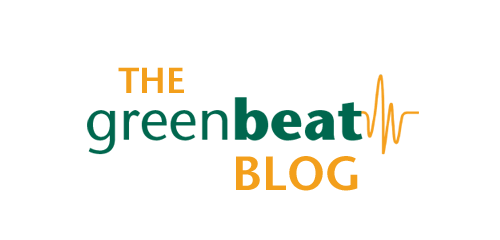Think Locally, Track Sustainability

Food service departments across the country are influencing their supply chain by channeling human health values into their purchasing choices. Yet, the impact does not end at the point of purchase. When these products are tracked with intention, teasing out which are sourced locally and which are produced with verifiable environmentally and socially preferred practices, it reveals the sweet spot, the crossover where a product carries both attributes simultaneously.
Identifying and accurately tracking these crossover products allows hospitals to use their purchasing power to most effectively to improve individual, environmental and broader community health. Understanding purchasing at the line item level supports better sourcing practices, cost management efforts and an understanding of both regional food production and national supply chains.
Here are the stories of two systems, Bronson Healthcare and Harborview Medical Center, taking different approaches to improve their communities through sourcing and tracking initiatives.
Tracking Local Spending through Dedicated Accounting and Handshakes: Bronson Healthcare
Bronson Healthcare in Michigan, comprised of three acute care hospitals ranging from 434 to 35 beds, self-operated to contract-managed and urban to rural, is serious about sourcing and serving local food. To Brendan Molony, the Sustainability Coordinator and his colleagues, local food is more than an initiative, it’s a mission.
“We want to build our community up. We want a healthy strong community that really ties into our food system,” says Molony. “The more we do with local food, the more...we can help drive...programs throughout our community. [Our mission to be a] community health catalyst is tied into sustainability goals.”
While spending hospital food dollars on locally sourced products is a key strategy, their purchasing goes beyond just achieving a set percentage or benchmark. Molony and his colleagues believe developing personal relationships is part of the process.
 Molony explains, “We will definitely go out to that farm. We make sure that their operation is sustainable according to our criteria and can handle supplying us.” The primary criteria Bronson seeks in potential partners, whether they are farmers, producers or a small business, is a set of shared values. Bronson sees these relationships as more than a purchasing agreement, but an investment. Molony or another member of the staff personally visits each operation.
Molony explains, “We will definitely go out to that farm. We make sure that their operation is sustainable according to our criteria and can handle supplying us.” The primary criteria Bronson seeks in potential partners, whether they are farmers, producers or a small business, is a set of shared values. Bronson sees these relationships as more than a purchasing agreement, but an investment. Molony or another member of the staff personally visits each operation.
To track and quantify how much money is flowing directly back to the surrounding community, Bronson has designated a specific account used to process all local food invoices. It gives them an easy way to track aggregate numbers around their purchases on local food.
To better understand details about the food being purchased, Molony is beginning to track individual line items on a spreadsheet. This new way of tracking will allow him to drill down on product types, category spend, and which products have attributes that contribute to environmental protection as well as community health.
Once we have achieved a 60-80% local spend then we can have influence over the supply chain [going to them] to say: “Maybe you should raise this chicken without antibiotics” so then we could start using those products and start influencing the market a little more...”
Sustainable Transparency from Purchase to Plate: Harborview Medical
Harborview, Medical Center, UW Medicine located in downtown Seattle that serves as a trauma center, teaching hospital and safety net for King County’s homeless and at risk populations, has taken a different, but equally impactful, strategy to address community and upstream health concerns. As the only level one trauma center serving a five state area, Harborview is all too familiar with the need for antibiotic efficacy to treat their patients. They are working to source local and sustainable foods, with a prioritization on meat raised without the routine use of antibiotics.
“We [decided] to concentrate on antibiotic- and hormone-free proteins to begin with,” says Katie Farver, Harborview’s Director of Nutrition and Foodservices, “I am a dietitian, Ben is a dietitian, we feel the that this is probably the most important thing to do at this point in time.”
She is referringto Ben Atkinson, the Manager of Outpatient Nutrition, Informatics and Wellness for Food and Nutrition Services who works with Farver and Brenda Nissley, the Environmental Sustainability & Waste Manager to lead the charge on healthy food and sustainable procurement at their facility.
According to Nissley, sourcing sustainably-raised food can require an additional investment, therefore selecting products that best meet a facility's goals is key. Harborview employs multiple tools to source and track sustainable purchases. Identifying the validity of claims on meat raised without antibiotics can be challenging. To ensure transparency and accuracy of product claims they use the labels and certifications recommended by Health Care Without Harm and Practice Greenhealth to steer their purchasing choices.
“Vendor relationship are key to tracking products,” says Atkinson. He interfaces frequently with vendors to get reports that list the different product attributes. Communicating early is critical; asking for reports 1-2 months in advance gives the vendor time to understand the request and get the pertinent information. Verified data is then tracked in CBORD, a food and nutrition service management software, making it easy to run reports and get data on purchasing patterns.
Meaningful Data: The Roadmap to Investing in Health at All Levels
Bronson fortifies the health of their community and patients through a local sourcing program based on personal relationships with producers and the alignment of common values while Harborview leverages strong distributor relationships and vetted, meaningful certifications to source more sustainable products and increase their spending on sustainable meat. Each team is working to transcribe their human health values onto their suppliers by relaying transparent expectations and building strong relationships.
Tracking both local and sustainable attributes separately, and with equal importance, will provide a clear picture of regional and national production practices. Accurate, meaningful data will bring to light the products that are produced locally in a sustainable manner and will magnify the benefits that each health care dollar can achieve.
This blog is part 2 in a series about separating local and sustainable metrics for accuracy.
Part 1: Accurate measuring of “local” and “sustainable” starts with separation
Part 3: How health care can inform the data revolution and bring transparency to the plate
Join Practice Greenhealth
Practice Greenhealth is the health care sector’s go-to source for information, tools, data, resources, and expert technical support on sustainability initiatives that help hospitals and health systems meet their health, financial, and community goals.
